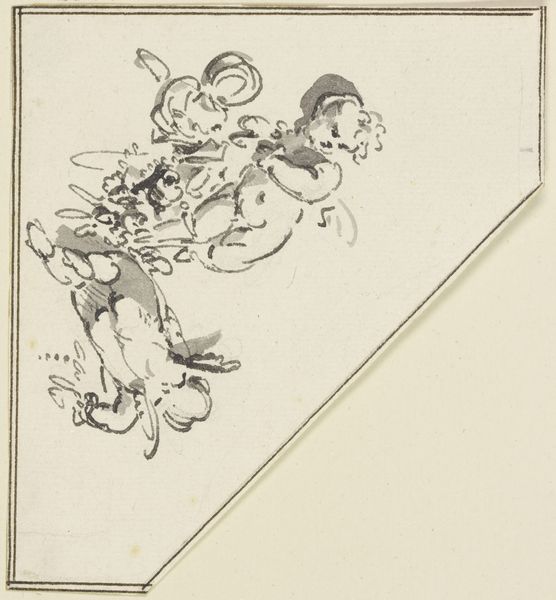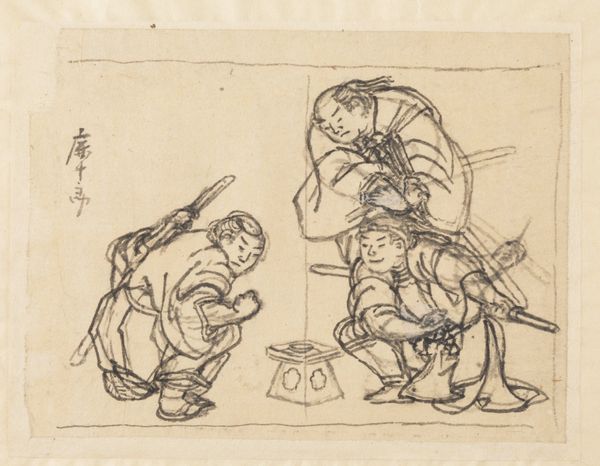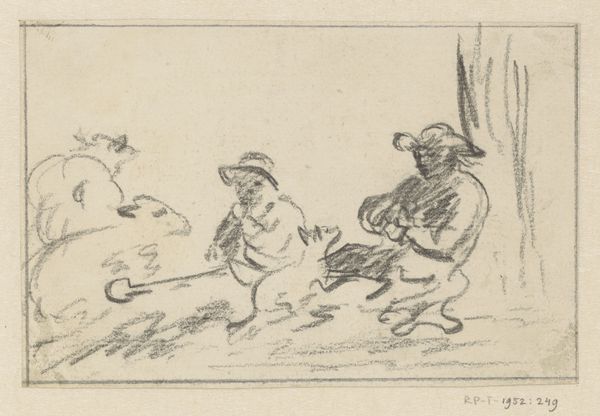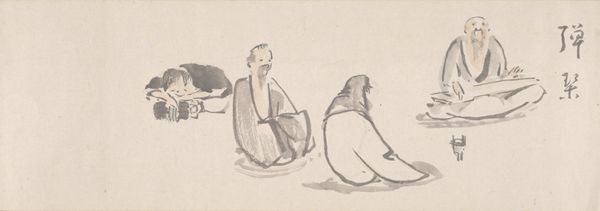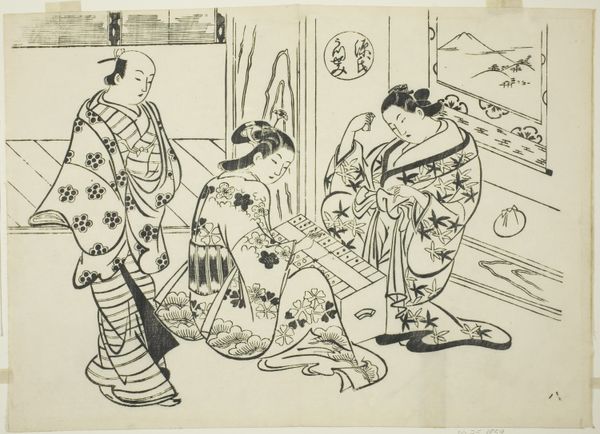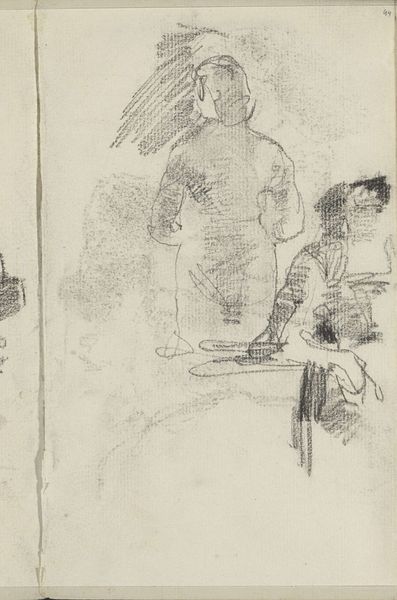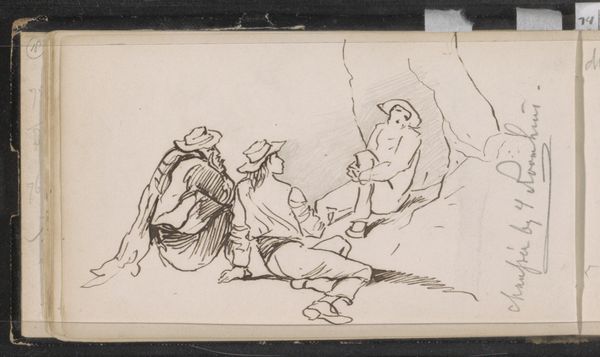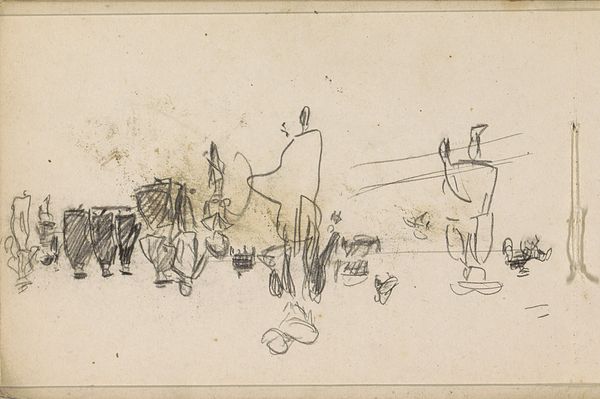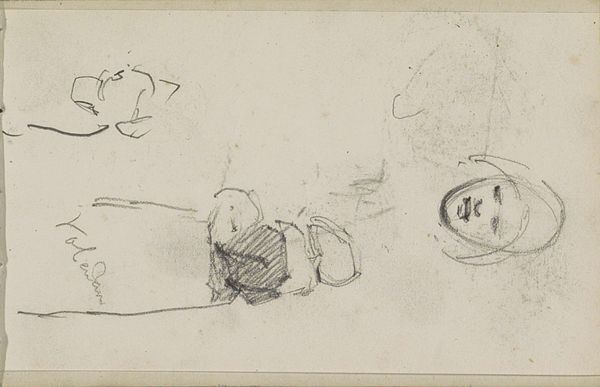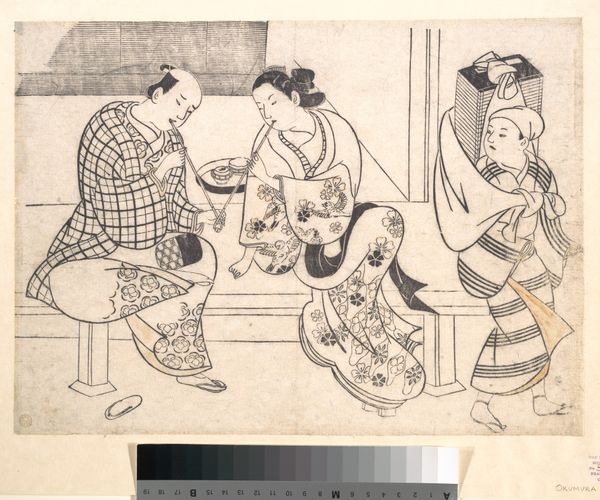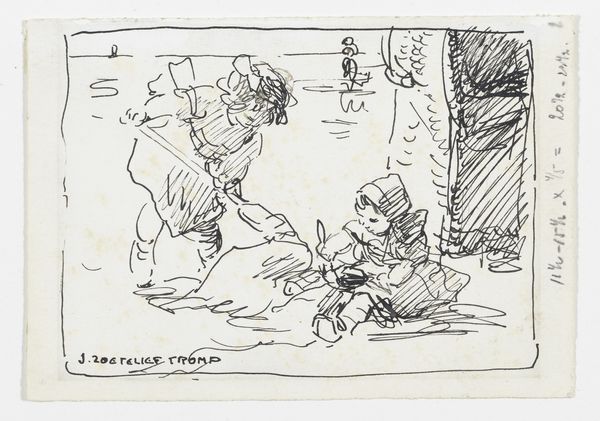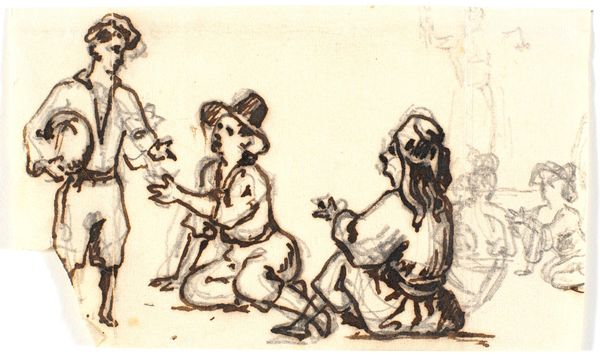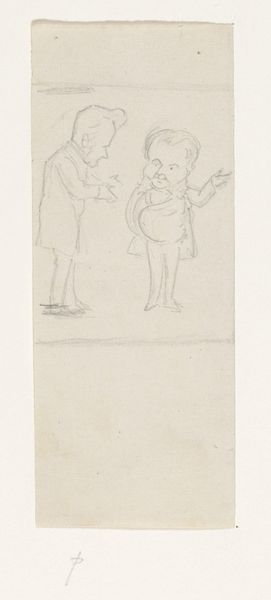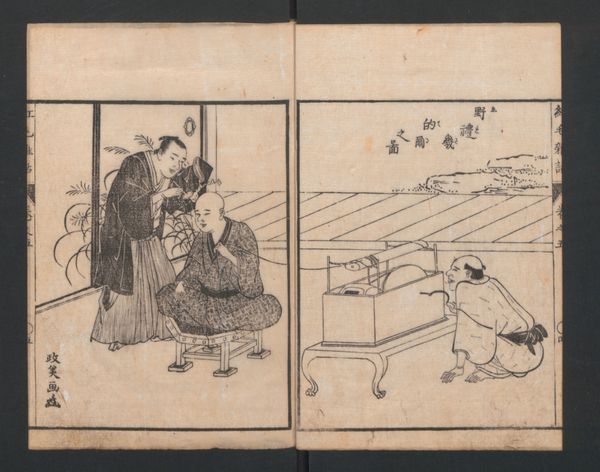
drawing, ink
#
drawing
#
comic strip sketch
#
quirky sketch
#
pen sketch
#
asian-art
#
figuration
#
personal sketchbook
#
ink
#
sketchwork
#
ink drawing experimentation
#
pen-ink sketch
#
sketchbook drawing
#
storyboard and sketchbook work
#
sketchbook art
Dimensions: height 89 mm, width 126 mm
Copyright: Rijks Museum: Open Domain
Curator: What a delightfully quirky sketch! This is “Wajangpoppen” attributed to Raden Katamsi, likely created around 1919. The artwork utilizes ink and drawing techniques to depict figures that bear resemblance to wayang puppets, evoking a playful sense of theatricality. What are your immediate impressions? Editor: The immediate mood? A slightly unsettling stage production. These characters seem poised between worlds, you know? The linework feels delicate, yet their expressions are… intense. Are they laughing? Mocking? Judging? Curator: Perhaps it's the stylized anatomy inherited from wayang kulit aesthetics. Notice how Katamsi renders their elongated limbs, the emphasis on the puppet's articulated joints and fixed expressions. In Javanese shadow play, each character represents archetypes, embodying distinct moral qualities. Editor: That’s fascinating! They look like shadow puppets, almost pinned down, but that heavy ink creates this palpable atmosphere, dense like humidity. I wonder if it’s meant to hint at the stifling social climate of colonial Java? Or is that a reach? Curator: Not at all! Remember, wayang performances weren't just entertainment; they transmitted philosophical and political ideas under the guise of entertainment. Katamsi might be subtly critiquing power structures, using the inherent symbolism of the puppets as commentary. The artist plays with expectations: what if the inanimate shadows had something to say? Editor: Right, the puppets become subversive messengers. Plus, there's a beautifully human quality, too—you feel the artist experimenting, almost in real-time, exploring forms and emotions. The ink looks spontaneously applied, straight from his sketchbook pages. I love that raw, intimate feel. Curator: It’s intriguing how these seemingly simple lines can trigger such depth, echoing not just aesthetic traditions, but psychological undercurrents. We look for narrative. We long for the cultural touchstones—and then we imprint our feelings. Editor: Exactly! It leaves us pondering those ever-relevant power plays between illusion and reality. Maybe it isn't a reach at all, is it? Katamsi has gotten me thinking about art as resistance... and, conversely, puppets as surprisingly powerful vessels.
Comments
No comments
Be the first to comment and join the conversation on the ultimate creative platform.
